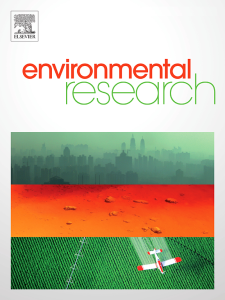Forest Terpenes and Stress: Examining the Associations of Filtered vs. Non-filtered Air in a Real-Life Natural Environment
Citation
Levy, C. M., Riederer, A. M., Simpson, C. D., Gassett, A. J., Gilbert, A. J., Paulsen, M. H., … Kahn, P. H., & Bratman, G. N. (2025). Forest terpenes and stress: Examining the associations of filtered vs. non-filtered air in a real-life natural environment. Environmental Research, 276, 121482. doi.org/10.1016/j.envres.2025.121482
Researchers wanted to see if breathing in natural plant chemicals called terpenes, found in forest air, could help reduce stress and improve health. In this study, people sat in the forest twice—once breathing regular forest air and once with the terpenes filtered out. Each session lasted one hour and was spaced at least eight days apart. Researchers measured things like heart rate, stress levels, blood pressure, and chemicals in the blood before and after each session.
The results showed that most health changes were small and not clearly linked to breathing terpenes, but some signs pointed in a helpful direction. Two stress-related markers—interleukin-6 (IL-6) and skin conductance levels (SCL)—were lower when people breathed in terpenes. This suggests that terpenes in forest air might have calming effects on the body. This was likely the first study of its kind to test the effects of removing terpenes from forest air during a forest visit.
Abstract
 Human health may benefit from exposure to a class of biogenic volatile organic compounds (BVOCs) consisting of isoprene units, known as terpenes. In this double-blind, randomized crossover trial, participants sat in a forest for two 60-min sessions, one in which terpenes were filtered out of the ambient air they breathed, and another in which they were not, separated by a minimum of an eight-day washout period. The primary outcome was the high frequency (HF) component of heart rate variability (HRV; measured continuously). Secondary outcomes included skin conductance levels (SCL) (measured continuously), self-reported stress and affect (measured every 20 min), blood pressure, heart rate, cortisol and inflammatory cytokines (measured before and after sessions). Serum concentrations of terpenes (measured before and after sessions) were also assessed to investigate the association of absorbed dose with these outcomes. We did not observe a significant association of filter condition with most outcomes; although the trends for affect, systolic blood pressure, cortisol, TNF-α, and CRP were all in the hypothesized direction. We did observe a significant association with interleukin-6, which was −0.19 pg/mL lower in the terpenes-on vs. terpenes-off condition, adjusted for baseline (95 % CI: −0.35, −0.03); and SCL over the session as a whole. A sensitivity analysis of the subset of data from participants who completed both conditions supports these findings and revealed additional significant associations with SCL (95 % CI: −1.87, −0.05); and TNF-α (95 % CI: −2.63, −0.10). To our knowledge, this is the first RCT to filter terpenes from ambient air during forest contact.
Human health may benefit from exposure to a class of biogenic volatile organic compounds (BVOCs) consisting of isoprene units, known as terpenes. In this double-blind, randomized crossover trial, participants sat in a forest for two 60-min sessions, one in which terpenes were filtered out of the ambient air they breathed, and another in which they were not, separated by a minimum of an eight-day washout period. The primary outcome was the high frequency (HF) component of heart rate variability (HRV; measured continuously). Secondary outcomes included skin conductance levels (SCL) (measured continuously), self-reported stress and affect (measured every 20 min), blood pressure, heart rate, cortisol and inflammatory cytokines (measured before and after sessions). Serum concentrations of terpenes (measured before and after sessions) were also assessed to investigate the association of absorbed dose with these outcomes. We did not observe a significant association of filter condition with most outcomes; although the trends for affect, systolic blood pressure, cortisol, TNF-α, and CRP were all in the hypothesized direction. We did observe a significant association with interleukin-6, which was −0.19 pg/mL lower in the terpenes-on vs. terpenes-off condition, adjusted for baseline (95 % CI: −0.35, −0.03); and SCL over the session as a whole. A sensitivity analysis of the subset of data from participants who completed both conditions supports these findings and revealed additional significant associations with SCL (95 % CI: −1.87, −0.05); and TNF-α (95 % CI: −2.63, −0.10). To our knowledge, this is the first RCT to filter terpenes from ambient air during forest contact.
Highlights
- Powered Air Purifying Respirator (PAPR) helmets filtered terpenes from forest air.
- Psychophysiological and immunological correlates of stress were assessed.
- IL-6 serum levels lower after sessions with terpenes-on vs. terpenes-off filter.
- Skin conductance levels (SCL) lower across time with terpenes-on vs. terpenes-off.
- All other outcomes not significant, but many trended in the hypothesized directions.
Keywords
Terpenes; Forest; Nature; Health; Stress